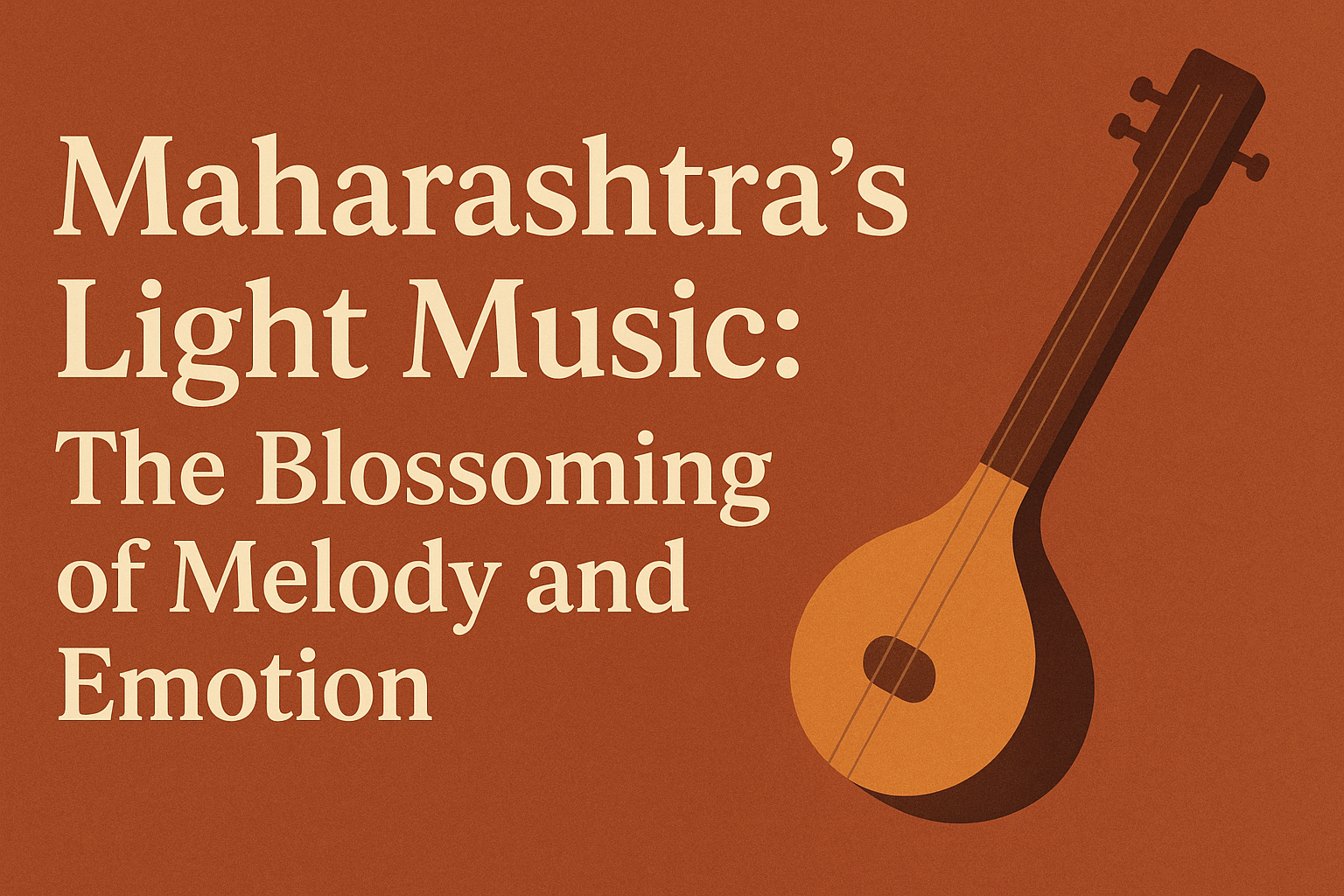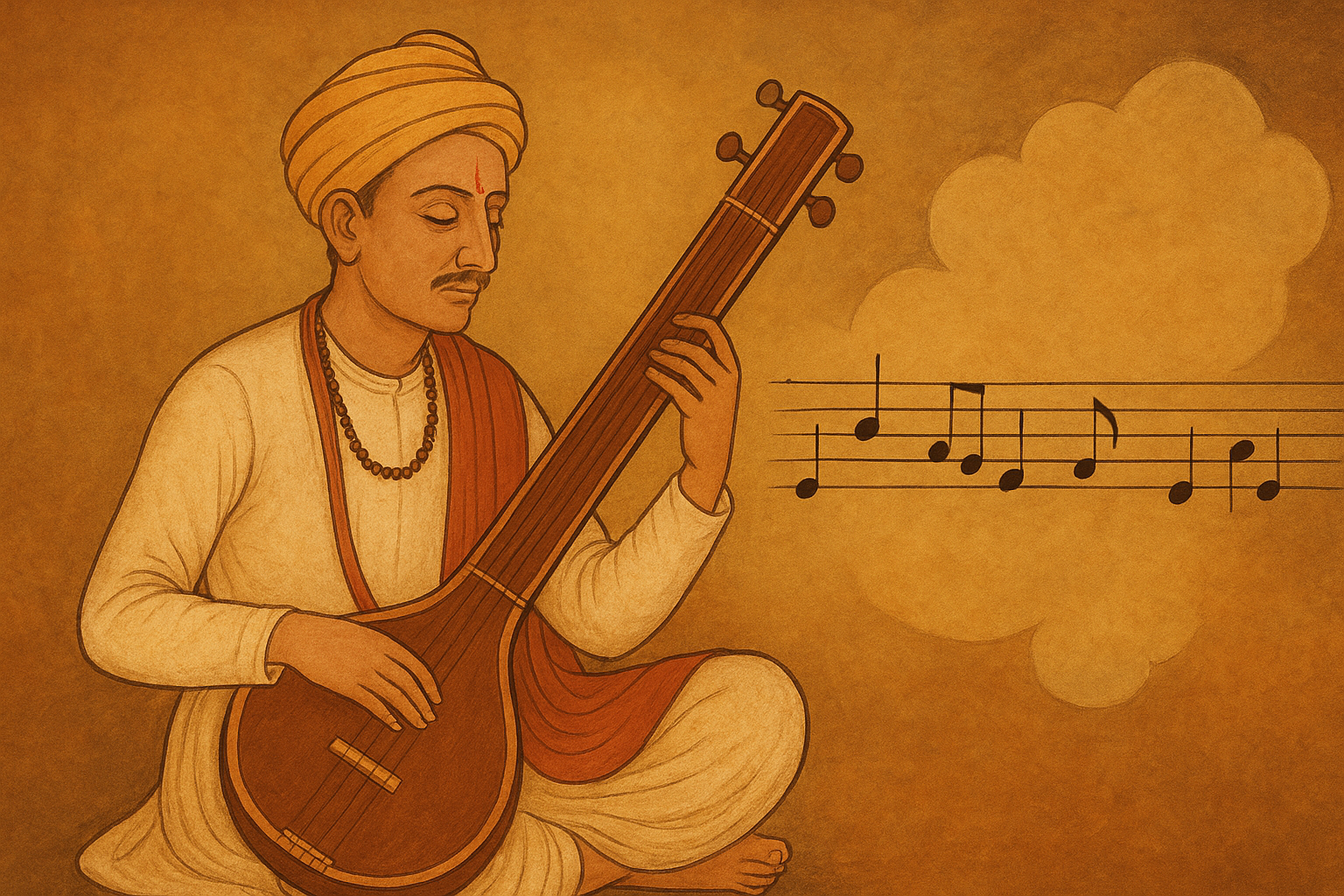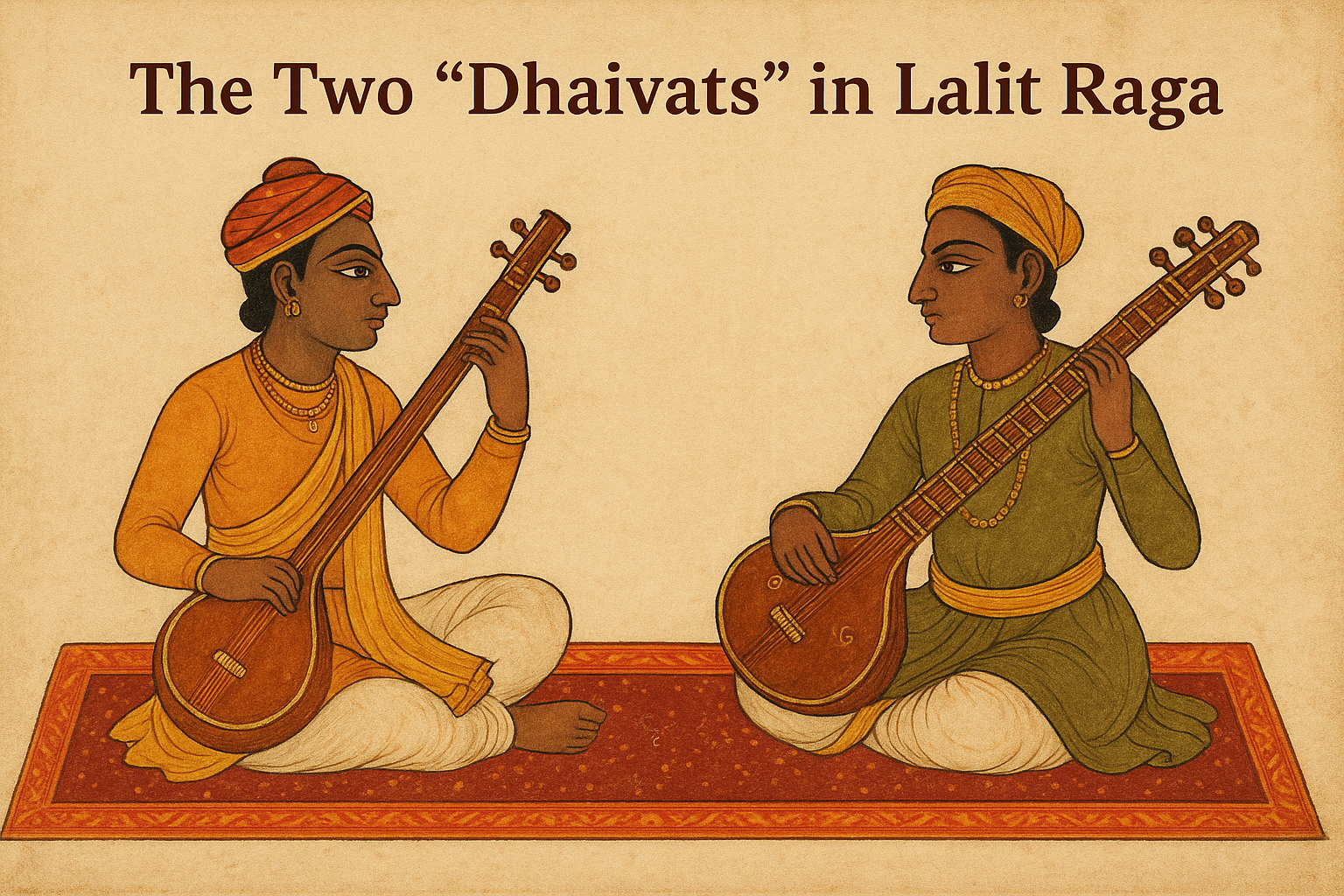A Journey Through the State’s Melodic Heritage
Music in Maharashtra flows like an eternal river — born in the sacred chants of the Vedic age, gathering along the way the sounds of folk, classical, semi-classical, and light music. Over time, these diverse streams have merged into a single harmonious current, exchanging rhythms and emotions and creating what can only be described as a vast, melodious forest.
Within this forest blooms a garden of light music — filled with fragrant and colorful flowers. There are serene white blossoms of devotional hymns and abhangas, the rosy charm of lavanis, and the deep red glow of patriotic songs like “Shur Amhi Sardar.” The sweet intoxication of ghazals drifts through like the scent of green champa, while children’s songs, festival songs, and emotional ballads add countless hues to this vibrant landscape.
The Essence of Light Music
Light music (Sugam Sangeet) stands apart for its simplicity and emotion. It is the meeting point of three creative forces — poet, composer, and singer. The poet gives words, the composer gives tune, and the singer breathes life into both, taking the emotion beyond language to the listener’s heart.
Unlike classical music, light music is less about rules and more about expression, accessibility, and feeling. Its key characteristics include:
Simple and meaningful lyrics
Sweet, flowing melodies
Clarity of diction and expression
Emotional depth and graceful rhythm
Roots of the Movement
The foundation of light music in Maharashtra was laid in 1923, when Ravikiran Mandal was established in Pune. Their rhythmic, metrical poetry encouraged tuneful expression, setting the stage for the evolution of bhavageet — songs of emotion.
Early pioneers like G.N. Joshi, Gajanan Watve, Snehal Bhatkar, and Jyotsna Bhole carried this new genre forward, turning poetry into melody that resonated across the state.
G.N. Joshi, in particular, played a historic role. As an HMV executive, he recorded timeless emotional songs and nurtured emerging talent, earning him the title “Architect of Marathi Light Music.”
The Golden Era: Composers, Poets, and Voices
The growth of Marathi light music was fueled by a golden generation of lyricists — Mangesh Padgaonkar, Shanta Shelke, Suresh Bhat, Vasant Bapat, and many others — whose verses found new life in melody.
They were brought to life by composers like:
Datta Davjekar, Sudhir Phadke, Ram Kadam, Srinivas Khale, Vasant Prabhu, Yashwant Deo, Hridaynath Mangeshkar, and Ashok Patki.
And the voices that immortalized these songs — Lata Mangeshkar, Asha Bhosle, Suman Kalyanpur, Manik Varma, Usha Mangeshkar, Arun Date, Mahendra Kapoor — became the soul of Maharashtra’s musical identity.
Sudhir Phadke: The Soul of Bhavageet
Sudhir Phadke, fondly called Babuji, redefined Marathi light music. His songs struck a perfect balance between poetry and melody — disciplined by raga, yet deeply emotional.
He believed that a song should speak through its simplicity — each note placed with purpose, each word carrying weight. Through his music, bhavageet became not just a genre but a cultural movement.
Other Pillars of the Tradition
Keshavrao Bhole: Treated every song as a sculpture, blending structure with feeling.
Master Krishnarao: Focused on “word-centric” singing with minimalist instrumentation.
Vasant Desai: A bridge between classical purity and cinematic imagination.
Datta Davjekar: Brought cinematic rhythm to Marathi music, giving Lata Mangeshkar her first playback opportunity.
Srinivas Khale: Known for versatile compositions like “Jai Jai Maharashtra Majha.”
Yashwant Deo: A poet-composer who valued meaning over embellishment.
Dashrath Pujari, Bal Mate, and Vasant Prabhu: Continued the tradition with devotional and lyrical sweetness.
Prabha Atre: An artist-scholar who bridged classical and light music with intellectual grace.
Classical vs. Light Music
| Aspect | Classical Music | Light Music |
|---|---|---|
| Focus | Rules of raga, tala, and technique | Emotion, simplicity, and meaning |
| Audience | Requires training and deep listening | Appeals to both educated and common listeners |
| Structure | Bound by strict theory | Flexible, experimental, expressive |
| Performance Duration | Longer, meditative | Shorter, instantly engaging |
| Forms | Dhrupad, Khayal, Thumri, Tarana | Bhavageet, Film songs, Ghazals, Devotional songs |
Both share the same roots — one appeals to intellect, the other to emotion.
Evolution and Modern Influence
Radio, records, and later films became the lifeline of light music. As the medium evolved — from gramophone to cassette to streaming — Sugam Sangeet adapted while retaining its emotional depth.
Even today, amid pop, rap, and fusion trends, its essence remains — the song that can be hummed, felt, and remembered.
“Yesterday’s music gave me life;
today’s music suffocates it.
Tomorrow’s — who knows?
For disco and pop, who has the time?”
— Yashwant Deo
In Closing
Maharashtra’s light music is not just a genre — it’s a living reflection of emotion, language, and melody.
It connects poetry to the heart, discipline to freedom, and tradition to change.
Through the words of poets, the imagination of composers, and the voices of great singers —
the stream of Sugam Sangeet continues to flow, timeless and alive.


